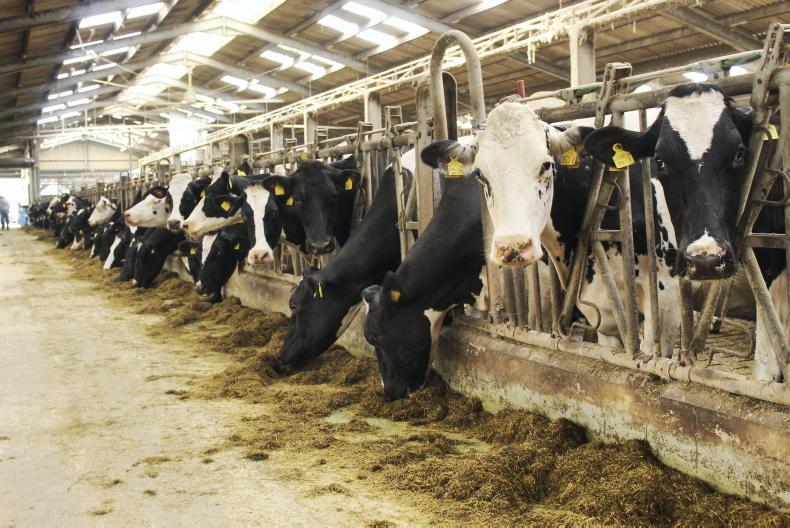Milk prices in Northern Ireland (NI) have seen a sustained period of upward momentum with base prices increasing in 11 of the last 12 months.
The most recent monthly milk league published by the Irish Farmers Journal shows that October base prices, excluding winter bonuses, averaged 41.34p/l across all processors.
That is a 45% increase, or 12.47p/l rise from the average base of 28.47p/l recorded back in October 2023.
Applying that differential to the average NI dairy farm supplying 750,000 litres annually, with 7.2% of yearly production supplied in October, it is an additional £6,770 in milk sales.
Once all relevant winter bonus payments are factored in, along with premiums relating to milk quality and volume, prices paid to the average NI dairy farm for October milk, ranged from 43p to 48p/l.
Market returns
Base prices paid by individual processors are ultimately generated by the returns from sales into liquid and commodity markets.
Some processors specialise in selling liquid milk and cream, however, for most companies it is commodities like cheese, butter and powder that are the flagship products.
Prices within these commodity markets are cyclical in nature and that is also reflected back in the prices paid to farmer suppliers.
As a result, the NI milk league also publishes a 12-month rolling milk price, as comparing prices over a longer period helps to level out the peaks and troughs within commodity markets.
It also lessens the impact of “one-off” bonuses and provides farmers with a more accurate reflection on how their processor compares to others.
For example, the most recent milk league shows a gap of 5p/l between the highest and lowest prices paid for October. However, when compared over a rolling 12-month period, that differential narrows to 2.2p/l.
Five-year rolling average
Taking it one step further, Table 1 shows the prices paid by processors over a rolling five year period from November 2019 to October 2024.
All prices published are based on the average NI farm supplying 750,000 litres annually with milk collected on alternate days.
Prices are calculated using average NI milk solids, TBC and SCC, as published each month by DAERA during the outlined five year period. Also included are any “13th” milk price payments from processors at the end of their financial accounting year, as well as winter bonuses and sustainability payments when applicable.
Leading price
As shown in Table 1, Tirlán has paid the highest rolling average milk price over the last five years at 35.76p/l.
Within the outlined period, Tirlán led our 12 month rolling analysis from April 2020 to August 2023, before losing that position to Dale Farm. However, it did regain the lead in March 2024 and has retained this positioned since then.
Dale Farm has also performed well over the last five years and finishes second on 35.05p/l.
The NI farmer owned co-op paid the highest base price across all processors within the outlined time frame at 34.08p/l, compared to 33.91p/l at Tirlán.
But different payments for milk quality, as well as higher milk collection charges, means Dale Farm misses out on first place.
Narrow price gaps
Of the remaining four biggest processors of NI milk, a gap of just 0.42p/l separates third to sixth positions.
NI’s largest milk processor, Lakeland Dairies, finishes third on 34.82p/l followed by Aurivo on 34.79p/l. Strathroy is fifth on 34.69p/l with Leprino Foods rounding out the table on 34.4p/l.
With processors expected to become more competitive for new suppliers in 2025 and beyond, our analysis shows that while there are significant gaps on current milk price that may appear lucrative, over a longer period, these price differentials tend to even out.
